Besiktas draw with Monaco in high-intensity Champions League group tie
Besiktas earned a point against Monaco keeping them top of Champions League Group G in a fraught and highly transitional encounter. Head Coach Şenol Güneş managed to create widespread disorganisation in the match through both controlled and uncontrolled methods. Besiktas were better at controlling the ensuing disorganisation than their opponents, and were unfortunate not to win the game.
 Directness triggering counter-pressure
Directness triggering counter-pressure
Just as in the reverse tie in Monaco, Besiktas played numerous direct passes and long balls from the goalkeeper and first-line. Long kicks would be sent to the left side of the pitch in order to trigger pressure around the ball with strong ball-oriented counterpressing. This trap would encourage Monaco to match Besiktas’ pressing, and with the french champions counterpressing being heavily man-oriented, this resulted in a heavy overloading of the left side of the pitch. Besiktas would often continue to force duels through second balls, third balls and fourth balls in order to overload the left as much as possible. The reason for this was to underload the right side to free-up Ricardo Quaresma, who would begin edging into the right halfspace from a central position, or even wait in the right flank, when Besiktas looked as if they were going to retrieve the ball. Tolgay Arslan and Ozyakup would both move towards the left side during counterpressing. Both players possess press-resistant attributes and were complemented well by Atiba Hutchinson’s physicality resulting in Besiktas being able to control counterpressing, earn turnovers and quickly exploit Monaco’s disorganisation.
Besiktas also triggered this trap from throw-ins. Often they would directly kick the ball off for a throw-in close to the halfway line on the left touchline or would force a throw-in through aggressive duels close to the touchline. They then positioned themselves spatially before aggressively pressing the ball-carrier with backwards pressing from Cenk Tosun, side pressing from either Ryan Babel or Ozyakup and passes back inside being blocked by Arslay and Hutchinson. Once they regained possession, they would look to transfer to Quaresma as quickly as possible. Due to the fact Monaco had begun to disperse to maintain possession from their throw-in, Besiktas would sometimes need to invite pressure once again having won the ball from a Monaco throw-in. They would do this by quickly circulating the ball through the left halfspace and wing with Adriano or Babel, or use Ozyakup and Arslan to drive diagonally into these areas with the ball in order to draw Fabinho and Tielemans away from the centre. Once they had created congestion on the left side, they then would look to transfer to Quaresma through Hutchinson or Cenk Tosun in the now vacated central channel.
False Left-Back and Controlled Disorganisation
When Besiktas were unable to trap Monaco into counter-pressure meaning the opposition remained spatially balanced, they looked to open the left halfspace and breakthrough with Adriano taking on the role of a false left-back. With Ryan Babel pinning back Raggi in the full-back position, Ozyakup was able to move into a wide position to draw Tielemans out. With Arslan moving to left half-back, Besiktas moved into a 3-4-2-1 build-up structure with Adriano now free inside the left-half space. In the very rare occasions in which Besiktas passed into their first-line, Joao Moutinho was responsible for blocking passes into Arslan from a goal-side position. When Arslan moved into the defensive line, Moutinho moved up to sustain Monaco’s man-oriented high-pressing yet, having moved Moutinho out of the midfield line, Fabri would often clip towards the left-flank to trigger Monaco’s backward man-oriented pressing in order to disorganise them. As a result, Moutinho’s pressing became very passive with the expectation of the ball being immediately clipped over his head. When the Besiktas build-up line was high, and Moutinho pressed with such a lack of intensity, the Besiktas first line of three could now access the halfspace for Adriano to receive and drive at Monaco’s last line, with poor pressing structure exacerbated by Lopes and Keita’s actions, with the former attempting to block central passes and thus allowing a free pass to Ozyakup. Hutchinson and Adriano would rarely position themselves in between the midfield and defensive line, and would rather stand in opposition lines in order to trigger immediate pressure when they received the ball. As a result, when Besiktas broke through Monaco’s first or second line, Tosun and Babel, who did often occupy the inside pocket to allow Ozyakup into the wide pocket, would need to set to allow Ozyakup, Adriano or Hutchinson to join the transition.
Monaco’s Man-oriented Full-backs
Monaco’s full-backs Raggi and Jorge epitomised the team’s man-oriented low defending. Gunes had identified this and positioned Quaresma very wide, creating a number of potential openings on the right-side. Primarily, Quaresma’s wide positioning, and Jorge’s man-oriented focus, opened the right halfspace in breakthrough and created the possibility of deep inside runs from Gonul, or more commonly from Ozyakup and Babel seeing as Monaco’s verticality was rarely stretched from pressing. Alternatively, Quaresma could move inside to open the wide channel, allowing for overlaps from Gonul or even late runs from Ozyakup. Once receiving the ball, Quaresma would either try for a direct take-on or cross when in a 1v1 position with Hutchinson and Arslan quick to rush to second balls on the edge of the penalty box and Tosun offering a consistent aerial threat. If he was faced with a balanced Monaco defensive line and protection from Fabinho, Quaresma would drive into the middle of the pitch to draw Jorge into the centre. This would then open up the wide channel even further for a late run from Gonul. As we all know, Quaresma has excellent dribbling ability and ball-trickery, and he would use such skills to draw Jorge closer towards him before offloading the ball and disorganising further with his movement into the centre.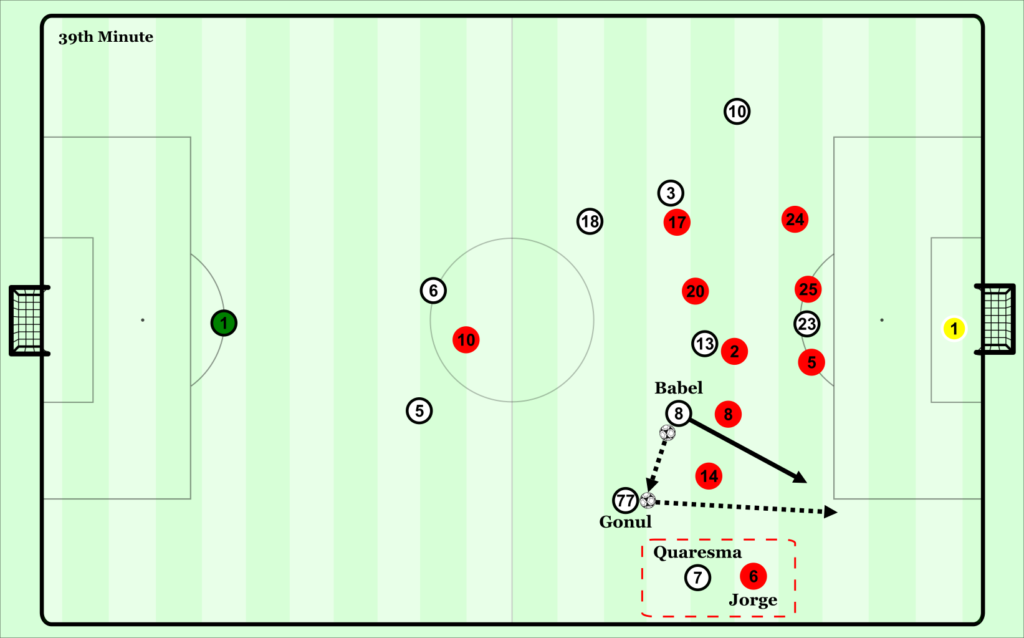
Jorge found real difficulties in defending against both Quaresma’s wide positioning and his free movement with the ball, and this was often exploited. In one instance, having enticed Monaco into a pressing trap with the ball in a wide left throw-in position slightly into Besiktas’ half, Besiktas quickly moved from space-oriented to ball-oriented and passing-lane oriented counterpressing once the receiver set himself to control the aerial throw. All the while Quaresma maintained his wide position and, on possession being regained by the left touchline, began to make a movement on the outside of Jorge whose body shape was closed and facing the ball on the opposite wing. The space between Jorge and Jemerson was large enough for Arslan to pass the ball through having regained possession whilst Monaco were moving into dispersal, and Quaresma was able to receive the ball and win a penalty, from which Cenk Tosun scored a well-deserved equaliser. There were further examples of both Jorge’s wide, man-oriented positioning and incorrect body shape allowing more potential passes in between him and Jemerson, with one almost identical scenario in the 71st minute where Tosun decided to pass back to the overloaded left rather than inside Jorge to Quaresma, despite Jorge’s backward facing and closed body shape. There were even moments where Jorge inexplicably stood with Quaresma once he had taken a throw-in, allowing an easy inside dribble towards goal for Gonul. On the opposite side, Raggi showed similar man-oriented low-defending tendencies. Early in the first half Besiktas kicked a long ball and won the ensuing second ball. With spacing on the left side, they quickly formed a 2-4-1 attacking structure and Ozyakup received in the left inside-pocket. With Babel standing wide on the touchline, Raggi was unsure whether to move back into the defensive line or remain wide. In the end, he did neither, and his inward facing body shape allowed Ozyakup to play to Tosun’s run into the penalty box. Raggi replicated this behaviour in a central position following a corner, and stepped out of the defensive line to follow Babel into the left halfspace. The dutchman’s set to Quaresma, roaming infield, encouraged Raggi to continue his pressure and left a huge space now in between Glik and Marco Lopes who was wide in the defensive line. Quaresma easily found a pass through, but the proceeding goal was disallowed for offside.
Monaco’s Counter-Attacking Problems
Where Besiktas were structured to control disorganisation to launch counter-attacks, Monaco were not able to exploit the wide spaces opened in these moments. Monaco responded to Besiktas’ long balls by condensing the area of the pitch where the ball was travelling to, with no wide defensive balance positions like that of Quaresma. As a result, on the occasions in which Monaco managed to secure possession, their transition was confined to the central three channels and, with Adriano often occupying the left-half space and Gonul, Pepe and Tasic remaining narrow across two central channels, Keita, Jovetic and Lopes were unable to find spaces to run-in behind quickly enough. In this scenario a wide run from Jorge was needed as Keita’s central runs further constricted the 3 defenders leaving space for Jorge to move into. However, the left-back was often pinned back by Quaresma thus hugely limiting Monaco’s width in offensive transitions. When transition moved to control in Monaco’s favour, with Fabinho and Tielemans occasionally winning duels, Jorge allowed himself to move forward. However, he would either make inside runs into Besiktas’ compactness, or he would move too early, leaving both him and Keita narrow on the last line. The injury to Thomas Lemar was a key factor in this loss to Monaco’s width, and Keita’s unintelligent movement contributed to weak transitional dynamics with Jorge. Where Besiktas’ right-sided wide players made a variety of connected movements, Monaco’s were unable to destabilise Besiktas’ defense. Even for the Monaco goal, Keita’s narrow run allowed no possible option of a through ball and Jorge provided no overlapping run into the now vacated left channel. On this occasion, Monaco were saved by Marco Lopes superb long-range shot.
Build-Up Issues
Monaco were unable to match Besiktas super-aggressive ball-oriented pressing, both being outnumbered for second balls in the centre of the pitch and in wide areas. The logical option would therefore have been to build-up from goal-kicks, however Monaco quickly reverted to kicking direct once their early attempts to build-up had been blocked by Besiktas high-pressing. Besiktas invited Subasic to pass the ball to the ball-far free centre back, Jemerson, triggering Ozyakup to leave Fabinho and sprint towards Jemerson. Ozyakup’s diagonal run towards Jemerson now blocked a pass into Fabinho with his cover shadow, whist Tosun moved inside Pepe to block any pass back into the centre or to the goalkeeper. As Ozyakup left Fabinho, Arslan moved onto the midfielder with Babel occupying Tielemans, leaving Raggi free on the ball-far wing whilst making any direct access to him impossible. Besiktas then squeezed the right side of the pitch with Gonul and Hutchinson tightly locking on to Lemar and Moutinho, whilst Quaresma trapped Jorge. The ball was then easily turned over on this side of the pitch and from this moment Monaco were hugely reluctant to build-up.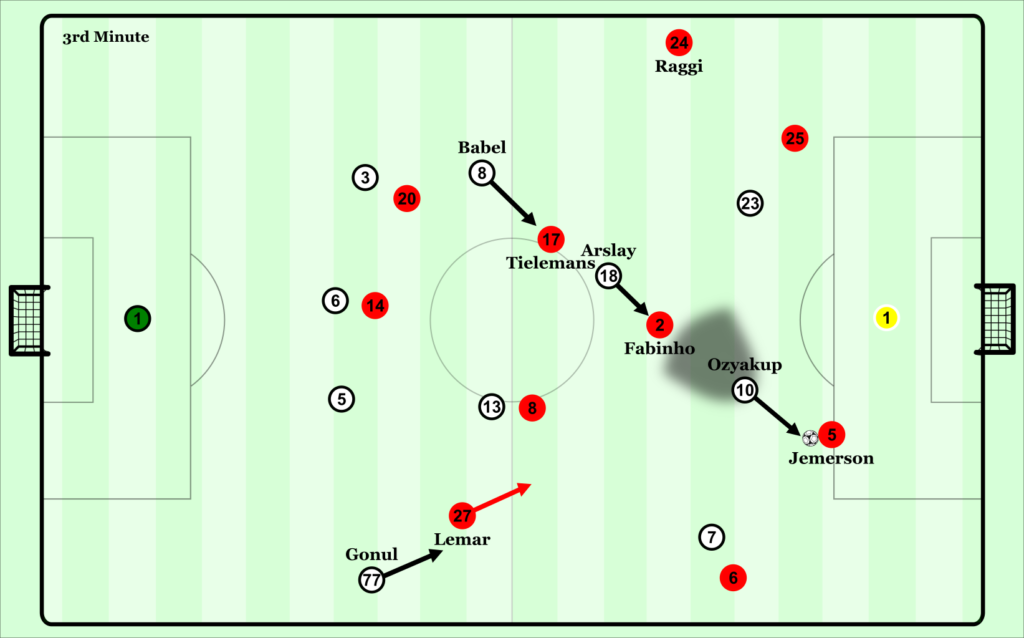
Build-Up Solution
This problem could have been comfortably solved in a number of ways, however most obvious would have been to drop Fabinho into the centre of the defensive line to create a 3-4-3 or 3-4-1-2 structure. Moving Fabinho into the defensive line once Jemerson received the ball would have allowed Besiktas to outnumber Monaco 3v2 in the first-line and then play out to the now unguarded right-side. If Arslan moved up to press Fabinho then Monaco would have needed to drop the no.9, Keita or Jovetic, deeper to occupy Hutchinson. By then positioning Tielemans and Moutinho in the halfspaces in the front-space, Fabinho would now be able to pass to either of them on the sides of Arslan, or immediately into the false 9 if Hutchinson continued to occupy Moutinho. In this structure, Lemar and Lopes would need to stay on the last line in between the centre-back and full-back on their side in order to pin back four defenders through the use of just two attackers, creating more space for Monaco’s central players.
Conclusion
Besiktas performance showed Şenol Güneş’ tactical adeptness and flexibility. They showed aspects positional play in build-up, whilst also being heavily unstructured in certain phases in order to cause chaos in their opponent’s structure. This variety caused Monaco huge problems, and the principality club were fortunate to earn 1 point across the two games. As for Monaco, this summer’s departures have weakened them, naturally, and they appear to need time to rebuild.


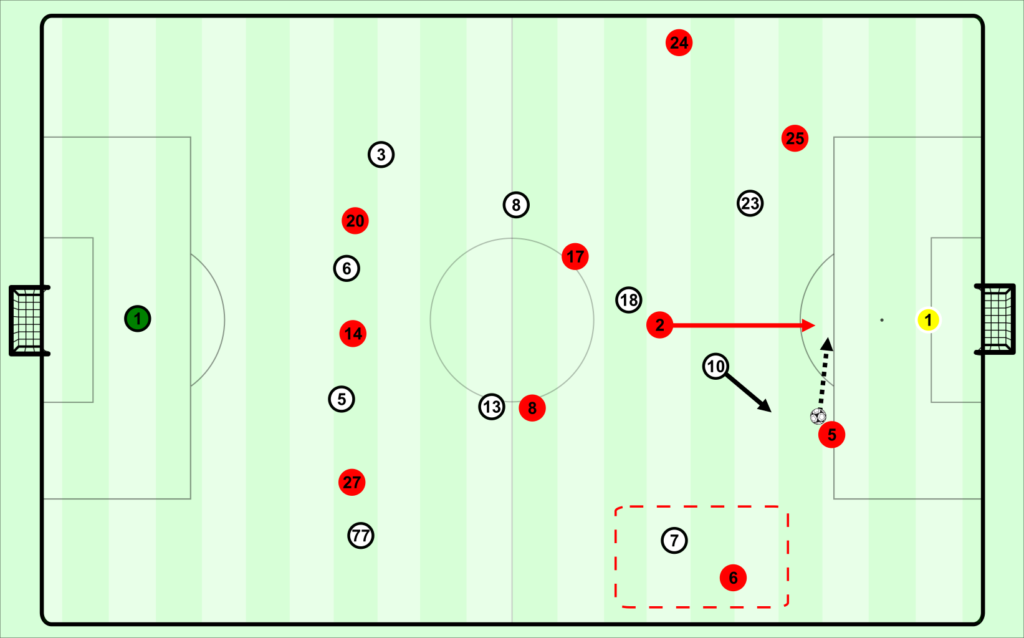
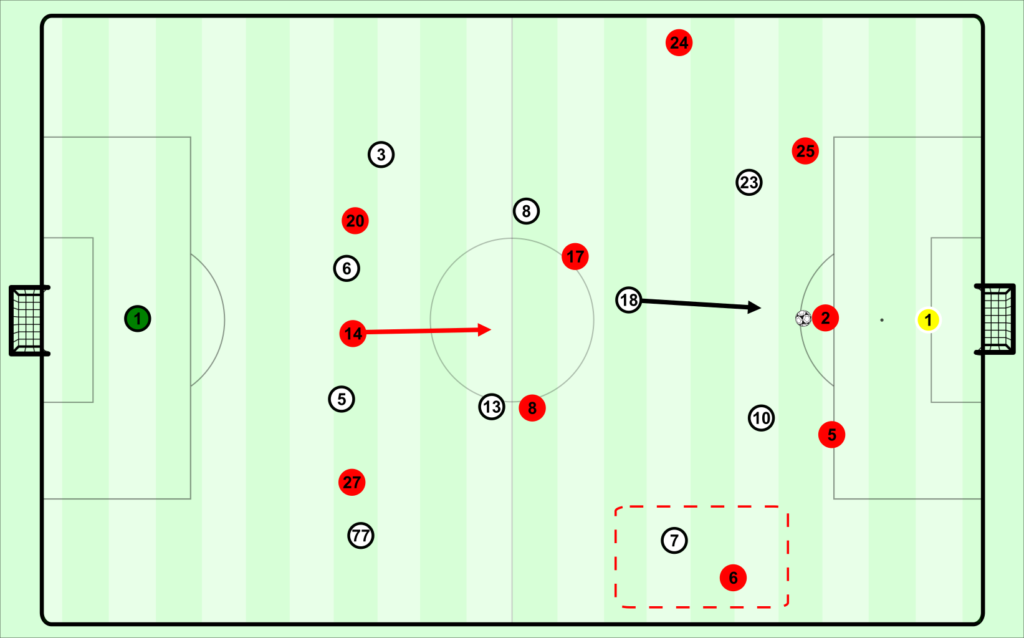
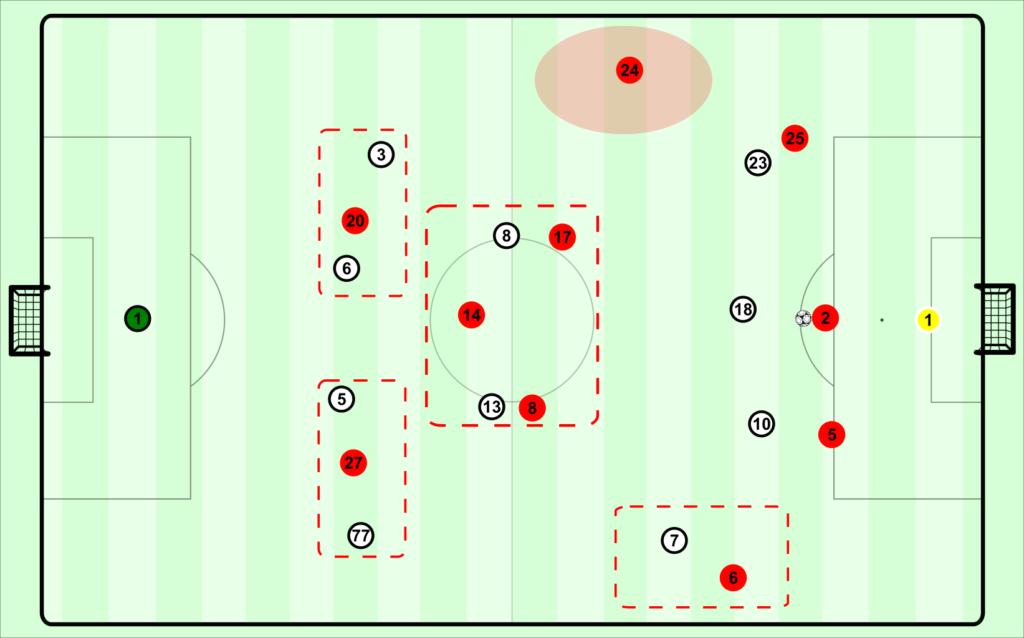
1 Kommentar Alle anzeigen
Baris November 24, 2017 um 7:37 am
I like your analysis, it gives great insight. What also interests me is the average age of both teams: Besiktas aged over 28 (7 over 30) and Monaco aged 24 (2 over 30, excluding Subasic). I would not be surprised to see Besiktas playing clever and I would expect Monaco to be more agile, physically strong and pressing. I think the successes and failures of both teams really depends on how they are coached. Monaco being the younger team, on top of correct tactical line up, could have also focused on their physical endurance and getting Besiktas tired, probably after 60min. Sure Besiktas coach might use the bench to provide new blood! your comments appreciated! I would not be surprised seeing Besiktas struggling , in front of a team like Leipzig.